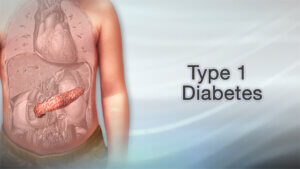Share this blog post with your friends
Having a Knowledge of diabetes and blood sugar is essential to understanding its implications and how to manage it. In this article, we will cover what diabetes is and its various types,
INTRODUCTION TO DIABETES

Source: Punch Newspaper
Diabetes also known as Diabetes Mellitus is a health condition that is characterized by high levels of sugar in the blood. This occurs when the hormone (insulin) responsible for regulating blood sugar is not present or active.
It can cause chronic diseases such as kidney damage, heart failure, eye problems, etc.
There are also three types of diabetes, which include Type 1, Type 2 and Type 3. Type 1 occurs during childhood, Type 2 occurs during adulthood and Type 3 occurs during pregnancy.
In as much as it is a health condition that puts individuals at risk, it can be managed. Proper management would involve constantly checking blood sugar levels, adopting a healthy lifestyle, etc.
UNDERSTANDING BLOOD SUGAR REGULATION.
Blood sugar regulation is very necessary for maintaining an individual’s health, so it is paramount to have an understanding of what it is. Here are some things to know about the blood sugar regulations:
1. Glucose
Glucose is a primary source of energy in the body and also the main type of sugar in the blood. It is present in almost all food we consume.

Source: Vinmec
2. Insulin
This is a hormone responsible for regulating the blood’s sugar. These hormones help to absorb the glucose in the bloodstream reducing the blood sugar level.
3. Pancreas
The pancreas is an accessory organ that helps in regulating blood sugar. It secretes insulin and glucagon which are both hormones that help regulate blood sugar levels.
4. Glucagon
This also helps in regulating blood sugar levels. One thing it does is, if the blood level is low in the bloodstream it helps to raise it once secreted by the pancreas.
5. Balance
The body system has a mechanism. They always work hand in hand ensuring there is a balance in blood sugar level. It ensures there is a regular supply of energy without an increase in blood sugar also known as hyperglycemia or a decrease in blood sugar also known as hypoglycemia.
6. Regulation
Other factors also influence blood sugar levels such as stress, diet, and hormonal imbalance.
TYPES OF DIABETES.
There are three types of diabetes which include:
1. Type 1 Diabetes
This type of diabetes occurs during childhood. It happens when the immune system mistakenly attacks insulin, the hormone responsible for regulating blood sugar. Once insulin becomes destroyed, the pancreas doesn’t produce enough and individuals are then placed on insulin therapy to help regulate their blood sugar levels.

Source: Mount Sinai
2. Type 2 Diabetes
This type of diabetes occurs during adulthood. It can occur at any age but is more common in adults. It is the most common type of diabetes with 90% of cases around the world. It happens when the body can’t produce sufficient insulin that would help regulate blood sugar levels. This type of diabetes is often linked to an individual’s lifestyle and some of the modifications would include adopting a healthy lifestyle, oral medication, or insulin therapy.

Source: Healthdirect
3. Type 3 Diabetes
Type 3 diabetes also known as gestational diabetes occurs during the pregnancy period when the body can’t produce sufficient insulin. These pregnant women also stand a risk of getting Type 2 Diabetes after childbirth. Gestational diabetes can also be managed through insulin therapy or regular exercise.
Knowing the difference between these types of diabetes will help in a tailored diagnosis, treatment, and management.

